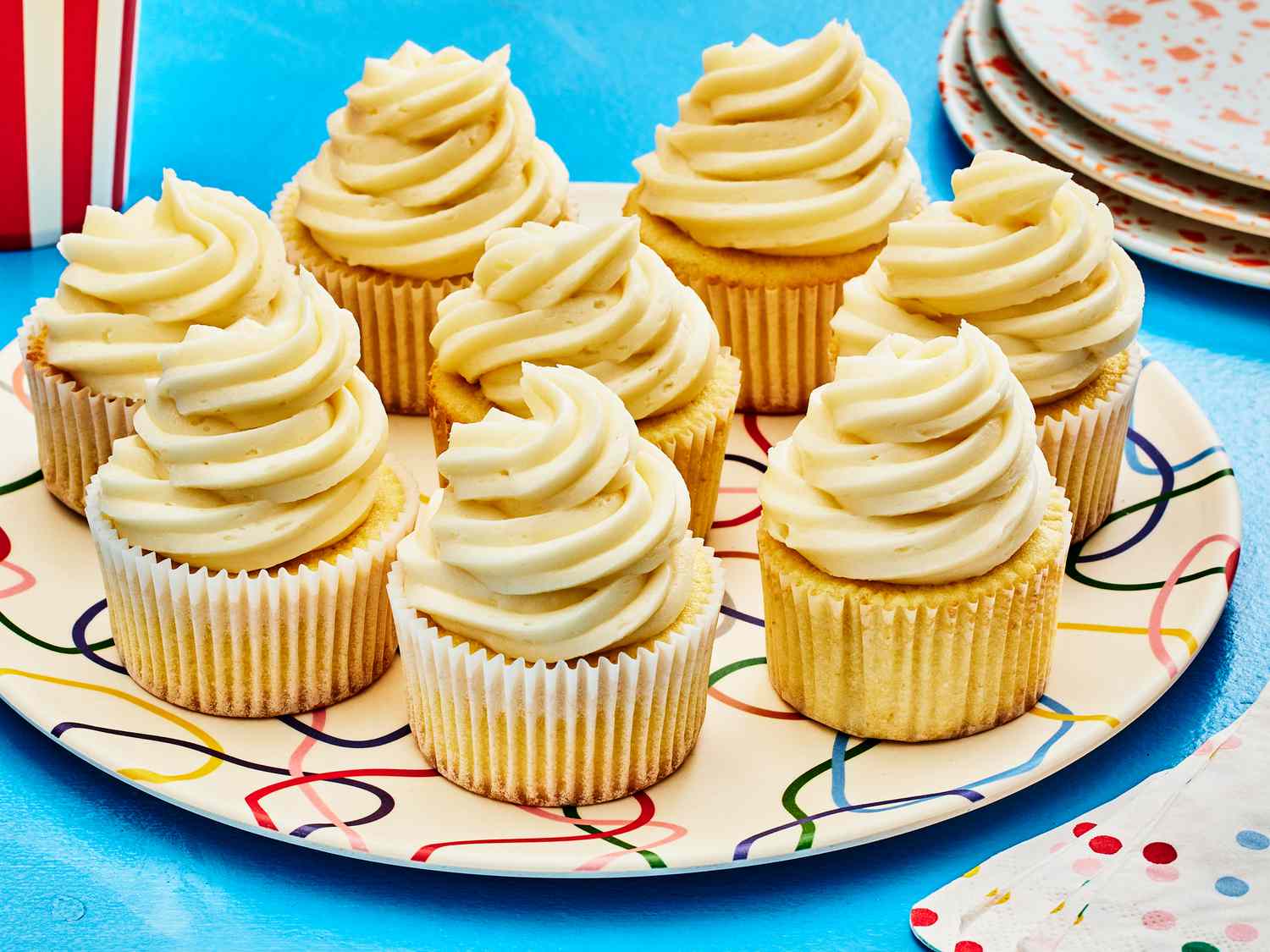
Why It Works
- Creaming room temperature butter with sugar aerates the cake batter and helps it rise in the oven.
- The lower protein content in bleached cake flour limits the amount of gluten developed in the cupcake batter and produce a fine, tender crumb.
When I was 14, I purchased a copy of Fergal Connolly’s 500 Cupcakes: The Only Cupcake Compendium You’ll Ever Need. I had just developed an interest in baking and having this book at home spelled doom for my parents and their kitchen: I spent afternoons and weekends creating a giant mess whipping up all kinds of cupcakes, some more delicious than others. I begged my parents for a stand mixer, and they acquiesced after they realized that baking was probably a healthier habit for their adolescent daughter than…some other habits. I brought cupcakes to every party, every bake sale, every family gathering, foisting them on anyone who paused to ask how I was doing. The one recipe that never let me down was the vanilla cupcake, which I turned to over and over again. It was the crowd favorite, the one my friends expected me to show up with.
When I saw that my test kitchen colleague Anna Theokisto developed a recipe for vanilla cupcakes, I jumped at the chance to make them. To come up with the very best cupcakes, Anna methodically tested every recipe variable possible—including the best kind of flour, fat, and liquid to use—until she landed on what another coworker describes as the “perfect vanilla cupcakes.” Anna’s recipe hit all the right spots: With a fine, tender crumb and just the right amount of vanilla, these cupcakes are easy enough to make on a weeknight, but also special enough for a celebration. In other words, they are everything I want in a cupcake. Here’s how to make them.
5 Tips for Making the Best Vanilla Cupcakes
Cream the butter and sugar well. As former editor Stella Parks noted in her classic vanilla butter cake recipe, butter is best beaten when it’s at soft but cool room temperature—ideally 65ºF or 18ºC. At this temperature, butter is pliable enough to beat with the sugar, which aerates the batter. Adequately creaming the butter and sugar traps air bubbles in the batter; as the cake bakes in the oven, these bubbles expand, helping the cake rise. “Without those air bubbles,” Stella writes, “butter and sugar form an ultra-dense paste that gives cakes the texture of a wet brick.”
Use room temperature ingredients. Because we’re using room temperature butter, it’s essential that all the other ingredients are also at room temperature. Incorporate cold eggs or milk into the batter, and chances are you will curdle the batter, ruining the emulsion and aeration you worked so hard to achieve when creaming the butter and sugar.
Reach for bleached cake flour. Flours have different protein contents, which indicate gluten potential. The higher a flour’s protein content, the more gluten it can potentially develop in a dough or batter. While all-purpose flour typically contains nine to 12 percent protein, cake flour generally ranges from seven to eight percent protein, making the latter ideal for tender cakes and pastries. Unlike unbleached cake flour, bleached flour is treated with chlorine. As Stella notes in her guide to the ingredient, this gives the batter more time to rise, and produces “super-lofty” and well-risen cakes.
Alternate the dry ingredients and liquids. It may be tempting to add all the flour or liquid at once, but resist, as it can overwhelm the batter. Alternating the ingredients on low speed ensures that each is properly incorporated, resulting in a smooth, evenly mixed batter.
Decorate with a piping tip. For that extra-special touch, fit a piping bag with your favorite tip and pipe a dramatic rosette, cute little stars, or delicate petals with your frosting of choice. And if you can’t be bothered? Slathering the icing on with an offset spatula is just fine.
Serious Eats / Morgan Hunt Glaze
Editor’s Note
This recipe was developed by Anna Theoktisto; the headnote was written by Genevieve Yam.
Trending Products










